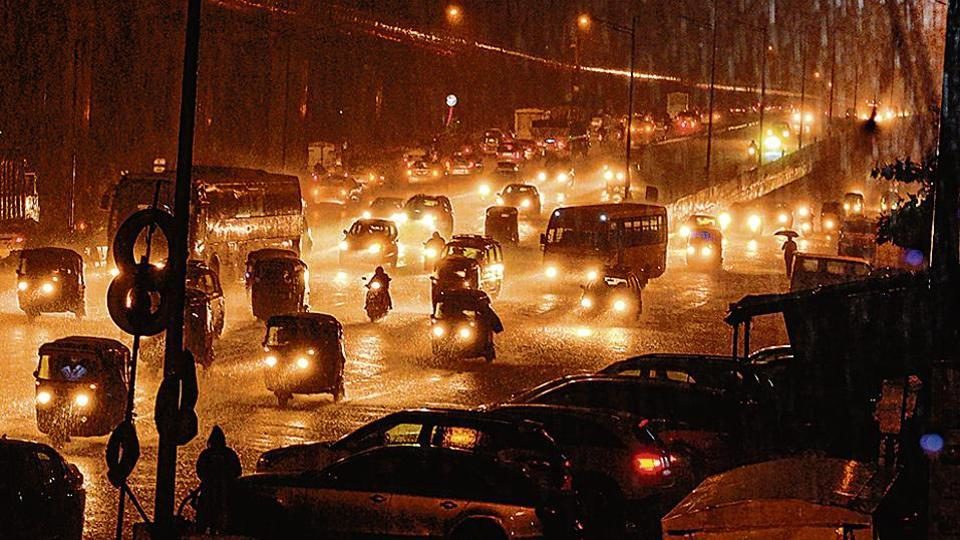
As per India Meteorological Department (IMD) records, Santacruz has recorded 921.3 mm rainfall from September 1 to 18, shattering the previous record of 920 mm set in 1954. There are 12 more days to go, and the forecasts suggest that the Mumbai rains are in no mood to stop.
The region met centre has issued a red warning to Mumbai, Raigad, Pune and Satara for Thursday forecasting extremely heavy rainfall at isolated places. 'Extremely heavy' rain means over 204 mm rain within 24 hours. Heavy to very heavy rain is forecast to prevail across north Konkan region till Sunday.
The cyclonic circulation and related low-pressure located over south Madhya Pradesh drives humid westerly winds from the Arabian sea. As the circulation gradually moves westward for the next few days, coastal Maharashtra is expected to witness very heavy rains.
The IMD has also warned fishers in north Maharashtra not to venture into the sea as strong winds of 45-55 kmph are likely to prevail this week.
On Tuesday, Kalyan, Bhiwandi and Thane received around 90 mm rainfall, while Colaba received 29 mm rainfall. Santacruz recorded 7.6 mm rain on Tuesday taking the total tally of monsoon rainfall from June 1 to September 18 to 3475 mm — highest ever on record. The IMD is yet to declare the record rainfall figures officially.
The normal rainfall in September at Santacruz is 341.4 mm. In just 18 days, Mumbai has received 170% excess rainfall. In the past 60 years, this is only the third time the monsoon rainfall has crossed 800 mm in September. Even Navi Mumbai has recorded 1197 mm rainfall in September, which is the highest in the past 15 years since the municipal corporation started recording.
Experts say that one of the strongest Indian Ocean Dipole (IOD) this year, may have led to higher monsoon rainfall, especially in central India which includes Kokan sub-division. Repeated formation of low-pressure areas over north Bay of Bengal and Odisha has resulted in 23% excess rainfall in central India — Konkan and Goa region alone has received 54% excess so far.
Earlier, July 2019 also recorded the second-highest rainfall in the last 60 years. In addition to Mumbai, excess rain has been recorded across Konkan and Madhya Maharashtra region. Raigad, Ratnagiri and Sindhdurg have recorded more than 4000 mm rainfall this monsoon season. The famous hill station, Mahabaleshwar has witnessed over 8300 mm rainfall this monsoon — more than the wettest place on Earth, Cherrapunji.



Comment: Rain, floods claim 1,422 lives so far this year in India